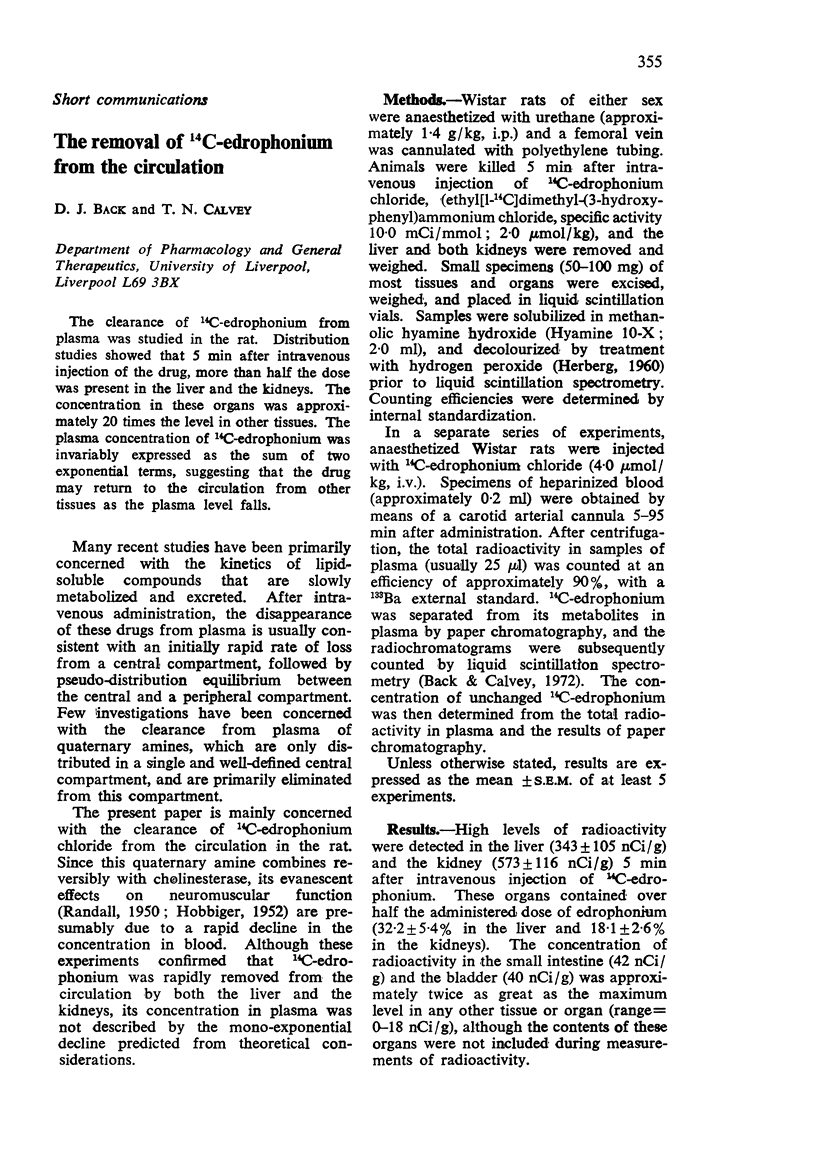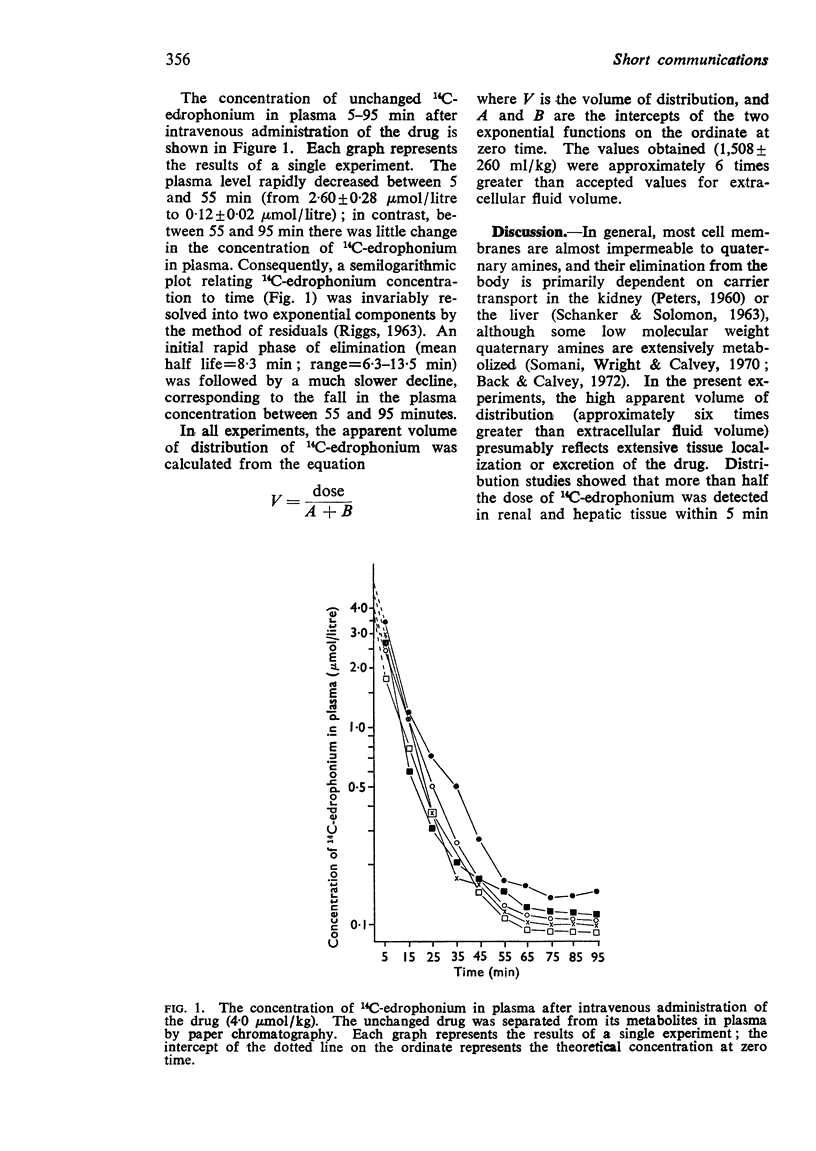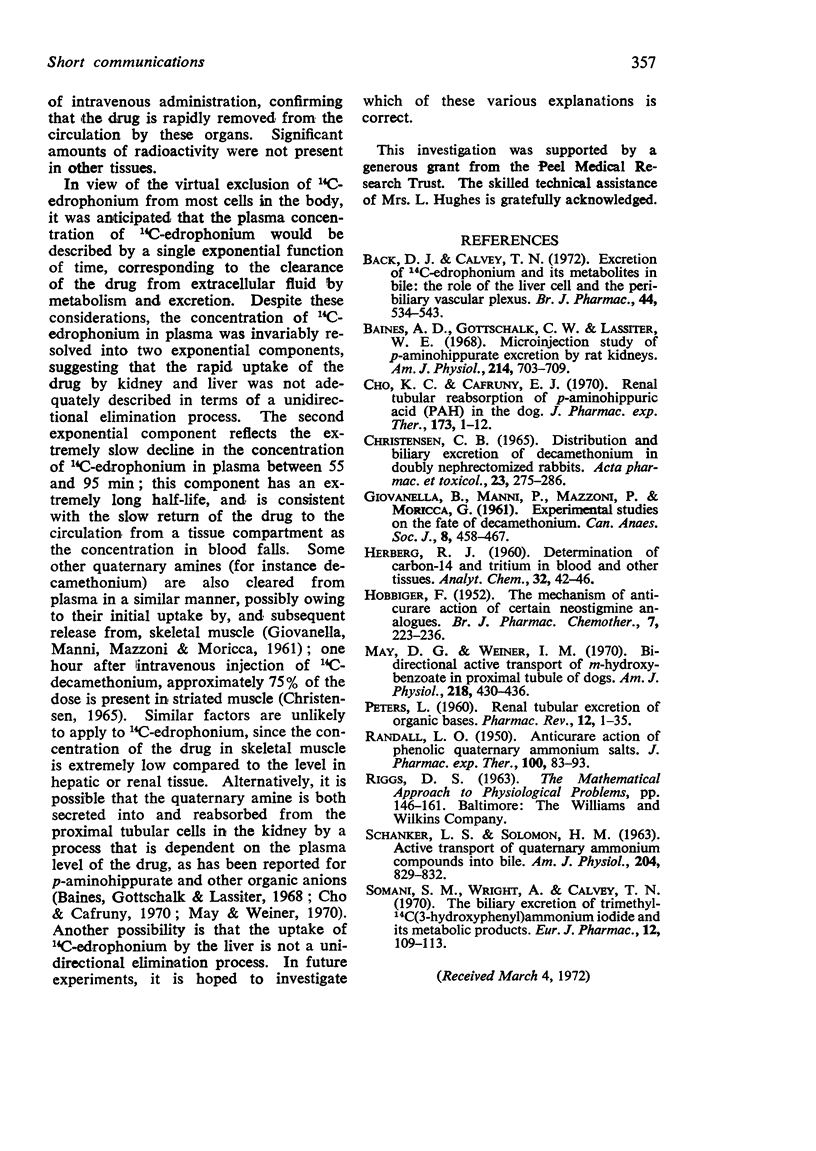Abstract
The clearance of 14C-edrophonium from plasma was studied in the rat. Distribution studies showed that 5 min after intravenous injection of the drug, more than half the dose was present in the liver and the kidneys. The concentration in these organs was approximately 20 times the level in other tissues. The plasma concentration of 14C-edrophonium was invariably expressed as the sum of two exponential terms, suggesting that the drug may return to the circulation from other tissues as the plasma level falls.
Full text
PDF


Selected References
These references are in PubMed. This may not be the complete list of references from this article.
- Back D. J., Calvey T. N. Excretion of 14 C-edrophonium and its metabolites in bile: role of the liver cell and the peribiliary vascular plexus. Br J Pharmacol. 1972 Mar;44(3):534–543. doi: 10.1111/j.1476-5381.1972.tb07290.x. [DOI] [PMC free article] [PubMed] [Google Scholar]
- Baines A. D., Gottschalk C. W., Lassiter W. E. Microinjection study of p-aminohippurate excretion by rat kidneys. Am J Physiol. 1968 Apr;214(4):703–709. doi: 10.1152/ajplegacy.1968.214.4.703. [DOI] [PubMed] [Google Scholar]
- Cho K. C., Cafruny E. J. Renal tubular reabsorption of p-aminohippuric acid (PAH)in the dog. J Pharmacol Exp Ther. 1970 May;173(1):1–12. [PubMed] [Google Scholar]
- Christensen C. B. Distribution and biliary excretion of decamethonium in doubly nephrectomized rabbits. Acta Pharmacol Toxicol (Copenh) 1965;23(2):275–286. [PubMed] [Google Scholar]
- GIOVANELLA B., MANNI C., MAZZONI P., MORICCA G. Experimental studies on the fate of decamethonium. Can Anaesth Soc J. 1961 Sep;8:458–467. doi: 10.1007/BF03021371. [DOI] [PubMed] [Google Scholar]
- HOBBIGER F. The mechanism of anticurare action of certain neostigmine analogues. Br J Pharmacol Chemother. 1952 Jun;7(2):223–236. doi: 10.1111/j.1476-5381.1952.tb01317.x. [DOI] [PMC free article] [PubMed] [Google Scholar]
- May D. G., Weiner I. M. Bidirectional active transport of m-hydroxybenzoate in proximal tubule of dogs. Am J Physiol. 1970 Feb;218(2):430–436. doi: 10.1152/ajplegacy.1970.218.2.430. [DOI] [PubMed] [Google Scholar]
- PETERS L. Renal tubular excretion of organic bases. Pharmacol Rev. 1960 Mar;12:1–35. [PubMed] [Google Scholar]
- RANDALL L. O. Anticurare action of phenolic quaternary ammonium salts. J Pharmacol Exp Ther. 1950 Sep;100(1):83–93. [PubMed] [Google Scholar]
- SCHANKER L. S., SOLOMON H. M. Active transport of quaternary ammonium compounds into bile. Am J Physiol. 1963 May;204:829–832. doi: 10.1152/ajplegacy.1963.204.5.829. [DOI] [PubMed] [Google Scholar]
- Somani S. M., Wright A., Calvey T. N. The biliary excretion of trimethyl-14C(3-hydroxyphenyl)ammonium iodide and its metabolic products. Eur J Pharmacol. 1970 Sep 1;12(1):109–113. doi: 10.1016/0014-2999(70)90035-x. [DOI] [PubMed] [Google Scholar]


